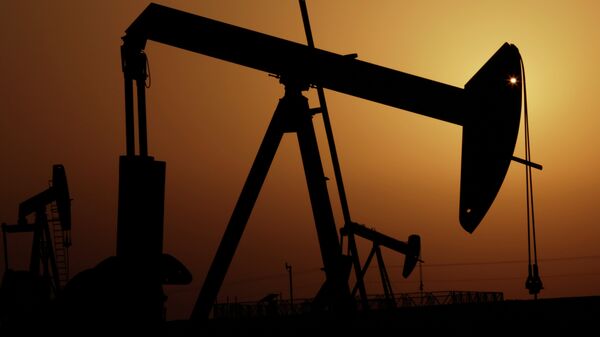Kristian Rouz – Recent news of the gains in US oil extraction have produced only a limited downward effect to the global oil prices as in fact many US oil rigs are not fully assembled are ready for re-commissioning. Besides, the decrease in the Saudi oil supply to the US in another factor supporting the Brent benchmark price at around $50/bbl or higher.
US shale oil production hit its 18-month highest as the boost to oil prices stemming from the OPEC output cuts encouraged greater extraction in North America. Still, there is a record amount of idling oil rigs in the largest US oilfield, meaning the US capability to substantially increase oil extraction is severely limited as many rigs are not fully-assembled and ready to start pumping oil.
"You would now be looking at the number of wells drilled and the uncompleted wells and not necessarily the rig count," said Bruce Bullock of the Dallas, TX-based Maguire Energy Institute of Southern Methodist University.
US oil prices rose slightly on Friday as crude imports from Saudi Arabia have decreased. Brent benchmark futures rose 9 cents per barrel overnight to $50.65/bbl, whilst US oil rose to $47.85/bbl, up 15 cents.
Between February and March, the imports of oil from Saudi Arabia dropped by 300,000 bpd. The US production currently stands at some 9.1 mln bpd, whilst US oil consumption is roughly 20 mln bpd (Energy Information Administration data), meaning the nation is still heavily reliant on oil imports. This also means the OPEC production cuts have had significant effects on the domestic US energy market, and unless the US is able to increase domestic production, fuel prices are likely to go up.
"OPEC's goal of drawing down inventories to normal levels is not going to be reached before their agreement expires on June 30," US investment bank Jefferies said in a note to clients.
Subsequently, despite the recent decline in oil prices, the oversupply concerns are currently ungrounded.
The oilfield land issue is another concern for US drillers. Many US energy small-caps typically rent the land under their oilrigs, and the extended period of low oil prices has affected their financial situation, where they were forced to drill and pump oil in order to keep their lease, even though oil extraction entailed pure financial losses for them.
"During the period where we had the downturn in price (2014-2016), there were a lot of leases that were in danger of being lost… they had to drill a well to maintain it," Michael Stoltz of the law firm Stubbeman, McRae, Sealy, Laughlin & Browder Inc. said.
According to Wood Mackenzie estimates, if all the incomplete oil rigs in Permian start pumping, US production would rise by 300,000 bpd – the exact amount of the recent decrease in supply from Saudi Arabia. This would mean the Saudis would have to cut their supplies to the US to an even greater extent, focusing on their Asian and European partners instead.




